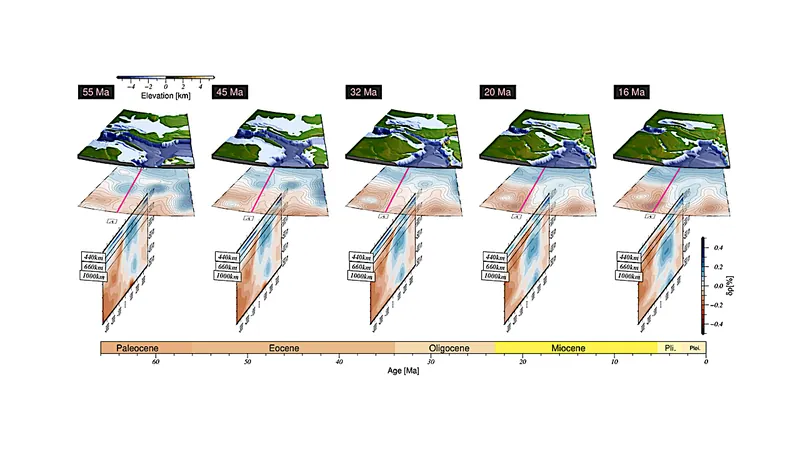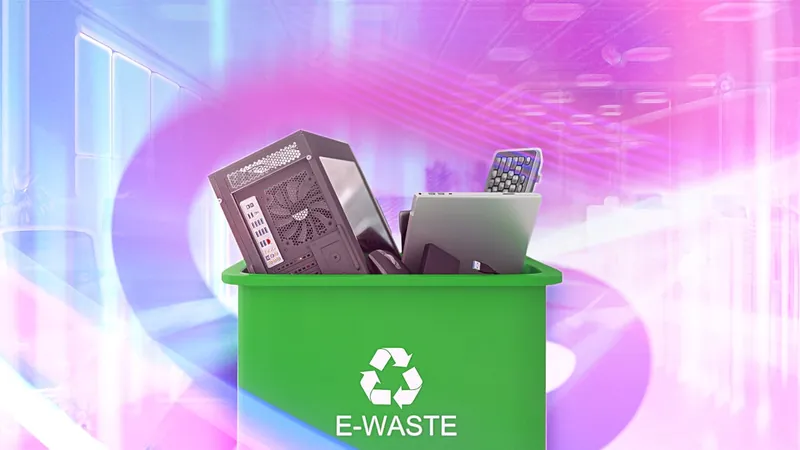
Breakthrough Discovery Revolutionizes Bioelectronic Material Vital for Medical Implants and Computing
2025-03-31
Author: Sarah
Introduction
In an unexpected twist of fate, a collaborative team of scientists from Rice University, the University of Cambridge, and Stanford University has made a game-changing discovery that enhances the stability of a crucial bioelectronic material widely utilized in medical research and computing applications. This innovative breakthrough could reshape the future of neural implants, biosensors, and advanced computing technologies.
The Material and the Discovery
The material in question, PEDOT:PSS, has been a staple in the scientific community for over 20 years. Traditionally, researchers have relied on a chemical crosslinker to ensure the material's stability in water. However, during experiments focused on precise patterning for biomedical optics, doctoral student Siddharth Doshi from Stanford made a remarkable oversight by skipping the crosslinker and opting for a higher temperature during preparation. To the astonishment of the team, the resulting material was stable without any added crosslinker.
"We were taken aback—this was not what we expected," said Scott Keene, a materials scientist at Rice. "Our curiosity was sparked, prompting a deeper investigation into the underlying mechanisms."
Revolutionary Heating Method
What emerged from their examination was a revolutionary method: heating PEDOT:PSS to a temperature above the conventional threshold not only eliminated the need for crosslinkers but also resulted in a higher quality product. Published in Advanced Materials, the findings promise to simplify and enhance the manufacturing processes of bioelectronic devices, with groundbreaking implications for neural implants, biosensors, and next-gen computing.
The Significance of PEDOT:PSS
PEDOT:PSS is a mixture of two polymers: one that conducts electronic charge and another that conducts ionic charge. Its unique ability to bridge living tissue and technology makes it essential for developing efficient neural interfaces. "It allows us to communicate with the brain on its own terms," Keene explained, emphasizing the significance of creating fine, high-resolution electrodes that can both record and stimulate neural activity with accuracy.
Advantages of the New Method
One of the significant advantages of the new method is the elimination of variability and potential toxicity associated with the crosslinker, which linked the two types of polymer strands but left water-soluble strands susceptible to instability. Conversely, the high-temperature process causes a phase change, enhancing stability by pushing soluble components to the surface where they can be removed, leading to a purer conducting film.
Margaux Forner, a doctoral student at Cambridge and a lead author of the study, emphasized the practical benefits of the heat-treated devices, noting their enhanced reliability and performance. "These heat-treated devices have proven to maintain excellent stability for over 20 days in chronic in vivo experiments," she reported, underscoring the film's impressive electrical performance even when stretched—an essential characteristic for creating resilient bioelectronic devices.
Implications for Neurotechnology
Notably, this breakthrough might explain some of the challenges faced by previous endeavors, such as those by Neuralink, which encountered stability issues while utilizing PEDOT:PSS in long-term neural implants. By increasing reliability, this discovery could accelerate advancements in neurotechnology, paving the way for implants designed to restore movement after spinal cord injuries and enhancing interfaces that connect the brain to external devices.
Advancements in 3D Structuring
Moreover, the researchers unveiled a technique to pattern PEDOT:PSS into microscopic 3D structures—a leap forward in the bioelectronics sector. Using high-precision femtosecond lasers, they can craft custom textures that optimize cellular interaction with the devices. "We are thrilled about the possibilities this 3D printing method opens up," Doshi remarked. "It allows for better integration with biological systems."
Conclusion
In conclusion, this groundbreaking discovery not only simplifies the fabrication process but also holds the promise of creating safer and more effective bioelectronic systems with diverse applications. As researchers unveil new ways to harness the unique properties of PEDOT:PSS, the future of neurotechnology looks brighter than ever. This is a pivotal moment in the development of devices that could profoundly impact the way we integrate technology and biology, potentially transforming treatments for conditions previously deemed untreatable.




 Brasil (PT)
Brasil (PT)
 Canada (EN)
Canada (EN)
 Chile (ES)
Chile (ES)
 Česko (CS)
Česko (CS)
 대한민국 (KO)
대한민국 (KO)
 España (ES)
España (ES)
 France (FR)
France (FR)
 Hong Kong (EN)
Hong Kong (EN)
 Italia (IT)
Italia (IT)
 日本 (JA)
日本 (JA)
 Magyarország (HU)
Magyarország (HU)
 Norge (NO)
Norge (NO)
 Polska (PL)
Polska (PL)
 Schweiz (DE)
Schweiz (DE)
 Singapore (EN)
Singapore (EN)
 Sverige (SV)
Sverige (SV)
 Suomi (FI)
Suomi (FI)
 Türkiye (TR)
Türkiye (TR)
 الإمارات العربية المتحدة (AR)
الإمارات العربية المتحدة (AR)